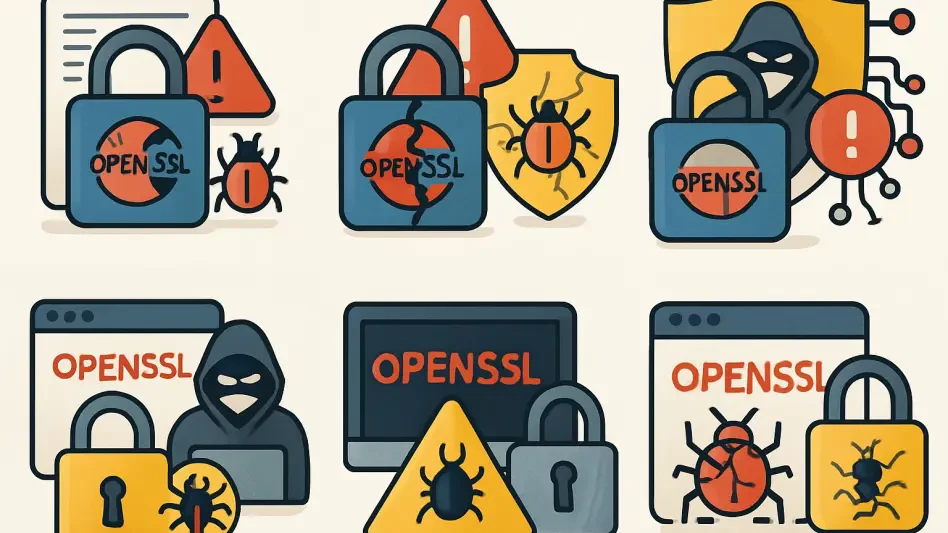Remote Code Execution (RCE) is a critical vulnerability that can lead to devastating outcomes if exploited successfully. In the world of cybersecurity, understanding and mitigating these vulnerabilities is crucial to maintaining the integrity and security of digital infrastructures. The recent unauthenticated RCE vulnerability in Ivanti’s Connect Secure (VPN) appliance, specifically CVE-2025-0282, has garnered significant attention due to its potential impact. The following article will delve into the techniques and methods used to exploit this vulnerability, providing both an analytical perspective and a guide on the exploitation process.
1. Introduction to Exploitation Techniques
The vulnerability in question, identified as CVE-2025-0282, revolves around a stack-based buffer overflow within Ivanti Connect Secure’s VPN appliance. Its severity is underscored by the fact that attackers could leverage it for unauthenticated RCE, making it a prime target for exploitation. Despite the deep dive into the mechanics of the vulnerability and subsequent dissection, a complete Detection Artifact Generator (proof of concept) has been withheld, slated for potential release at a later date.
Security experts have debated the ethical implications of withholding such information. While some argue it helps protect systems from immediate threats, others believe transparency can aid in quicker remediation. Notably, some industry leaders have expressed frustration over recurrent vulnerabilities in Ivanti’s mission-critical appliances, attributing it to outdated coding techniques. Yet, the root of this issue lies in recognizing the genuine challenges that modern security architecture poses and ensuring proactive measures are in place. This article will refrain from diving into these broader ethical debates, focusing instead on the technical aspects of exploiting CVE-2025-0282.
2. Background on CVE-2025-0282
To truly appreciate the complexity and potential risk associated with CVE-2025-0282, it’s essential to understand its root cause. This vulnerability is found within the binary /home/bin/web of the Ivanti Connect Secure appliance, specifically affecting the handling of incoming HTTP requests and VPN protocols, including the IF-T TLS. The exploitation hinges on a stack-based buffer overflow triggered by sending a clientCapabilities block exceeding 256 bytes, which spills over into other stack variables and eventually the return address.
Upon investigating the code, it was revealed that the vulnerability stemmed from the use of strncpy instead of strcpy in handling clientCapabilities. The developers mistakenly passed the size of the input string rather than the destination buffer, leading to an overflow scenario. By analyzing the decompiled code on an Ivanti Connect Secure appliance running version 22.7R2.3, the precise lines of code responsible for this error became apparent. The seemingly innocuous mistake paved the way for a severe security flaw, highlighting the critical nature of secure coding practices.
3. Initial Analysis of the Vulnerability
In the world of cyber exploitation, identifying and understanding the initial vulnerability is tantamount to laying the groundwork for further actions. For CVE-2025-0282, the stack-based buffer overflow was identified in the code segment responsible for handling IF-T connections. The decompiled snippet of the ift_handle_1 function reveals how the clientCapabilities parameter’s length was mismanaged. Specifically, the strncpy function call copied a potentially oversized input string into a buffer defined to be only 256 bytes.
The use of strncpy instead of the unsafe strcpy indicates an attempt at secure coding that went awry due to incorrect parameter handling. While strncpy is generally safer, passing the input string size rather than the destination buffer size resulted in an out-of-bound memory write. This oversight opens the door for an attacker to overwrite critical stack variables, including the function’s return address, potentially leading to arbitrary code execution. The analysis sheds light on how seemingly minor errors in code can cascade into significant security issues.
4. Stack Layout Examination
A deep dive into the stack layout provides a clearer picture of how the buffer overflow impacts the function’s security. By examining the variables’ detailed arrangement on the stack, the position of the buffer (dest[256]) alongside other stack variables becomes evident. Following this buffer is the object_to_be_freed variable, spanning 4 bytes, and other function-specific variables including the stored return address. Recognizing this layout is crucial for understanding how an overflow can disrupt normal execution flow.
The primary challenge lies in the existence of the object_to_be_freed variable, which throws an exception when destroyed, due to an invalid address caused by the buffer overflow. For a successful exploit, one must find a way to manage this variable and other stack components to facilitate control over the return address. This complex dance between different stack elements underscores the sophisticated nature of modern exploitation techniques, requiring both precision and a keen understanding of low-level programming intricacies.
5. Code Execution Before Function Return
Analyzing the specific code executed before the function’s return provides insights into where the exploitation can target. For the ift_handle_1 function, key lines of code are executed before reaching the return statement, which includes the destruction of the object_to_be_freed variable. The function attempts to free this object, leading to an exception if the memory address is invalid due to the buffer overflow.
Before the function returns, it executes a segment of code that interacts with various stack variables. The critical problem is that the object_to_be_freed variable, residing just after the dest buffer, is freed before returning control to the overwritten address. This destruction sequence introduces a significant hurdle in achieving the desired control over the return address. The situation is further complicated by the need to provide a valid address to prevent the free() function from throwing an exception, adding layers of complexity to the exploitation process.
6. Exploring Alternative Exploitation Methods
Faced with the challenge of invalid memory address exceptions caused by the object_to_be_freed variable, alternative methods of exploitation must be considered. Specifically, attention is drawn toward a virtual function call at offset 0x48 within the decompiled code. This call dereferences a pointer stored in the a1 variable and subsequently invokes a virtual function, potentially providing a pathway for exploitation.
Disassembling this function invocation elucidates the mechanism at play. By dereferencing the a1 pointer and accessing data pointed to by this, the code calculates a function address to call. This process involves manipulating the eax register and presents an opportunity to steer code execution in a desired direction. However, exploiting this method requires a nuanced understanding of the underlying logic and careful manipulation of involved pointers, reflecting the intricate nature of advanced exploitation techniques.
7. Understanding the VTable Mechanism
To leverage the virtual function call for exploitation, a thorough understanding of the vtable mechanism is essential. In C++, a vtable (virtual table) holds pointers to virtual functions of a class, facilitating polymorphism. By manipulating the this pointer, which points to the vtable, attackers can redirect execution to arbitrary locations. Understanding and exploiting this mechanism forms a cornerstone of modern exploitation techniques.
A diagram illustrating the memory layout helps contextualize the vtable’s role. The this pointer stored on the stack points to the vtable address, which in turn contains pointers to virtual functions. By overwriting the this pointer with a controlled value, one can manipulate the function pointers within the vtable. This manipulation effectively allows the attacker to redirect execution flow to a desirable location, bypassing traditional security measures such as ASLR and stack canaries. Knowing which memory locations to target is crucial for implementing this strategy successfully.
8. Exploitation Strategy
The primary strategy hinges on overwriting the this pointer to gain control over execution flow. By manipulating the pointer, the attacker aims to redirect it to a carefully crafted sequence of instructions (gadgets), facilitating RCE. A significant challenge lies in locating a valid pointer for the fake vtable that can sustain the virtual function call without causing an exception.
The process involves meticulous searching within the binary for suitable addresses. The goal is to identify a location that holds a valid address pointing to another address, which can be manipulated to point at a series of useful instructions. This search can be time-consuming and requires a keen eye for detail, as not all pointers will be useful or safe to use in this context. The intricacies of hunting for appropriate gadgets exemplify the painstaking effort involved in successful exploitation endeavors.
9. Finding a Suitable Gadget
A suitable gadget, in this context, refers to a sequence of instructions within the binary that can facilitate the desired execution flow. Specifically, the gadget must perform operations that lead to an early function return without causing a segmentation fault. Finding such a gadget often involves combing through the binary and leveraging tools like ROPgadget to locate potential candidates.
Key criteria for an effective gadget include its ability to perform necessary operations without premature termination or exceptions. For instance, a gadget that adjusts the stack pointer and executes a return instruction can be highly beneficial, provided it does so within the constraints of the existing stack layout. The careful selection of these gadgets forms the backbone of a robust exploitation strategy, bridging the gap between theoretical knowledge and practical application.
10. Stack Pivot Technique
Achieving control over the instruction pointer often necessitates a stack pivot technique. In essence, this method involves redirecting the stack pointer (esp) to a controlled buffer, ensuring subsequent operations occur within attacker-controlled memory. Identifying the location of this controlled buffer is crucial, as it allows precise manipulation of subsequent function calls.
Analyses reveal that the bytes from the initial payload spray appear at a specific offset within the stack. By finding and leveraging these known positions, an attacker can perform a stack pivot, shifting the stack pointer to align with controlled data. This alignment paves the way for predictable execution flow, setting the stage for executing a Return-Oriented Programming (ROP) chain. The stack pivot technique, albeit complex, is a powerful method for reversing control from defensive security measures.
11. Locating the Perfect Gadget
The quest for the ideal gadget that accomplishes a stack pivot and performs an early return is paramount. Upon thorough analysis and extensive searching, a suitable gadget was identified. This gadget not only performs a stack pivot but also includes instructions handling registers and a return sequence without causing a segmentation fault. This discovery is a significant milestone in the exploitation process.
By leveraging this gadget, attackers can reliably shift the stack pointer, avoiding premature termination or segmentation faults. The perfect gadget includes instructions to adjust the stack pointer and restore necessary registers, ensuring continued execution flow within controlled regions of memory. Undoubtedly, finding this gadget required meticulous effort and extensive knowledge of low-level programming and binary analysis.
12. Achieving EIP Control
With the stack pivot and suitable gadgets in place, achieving control of the Instruction Pointer (eip) becomes a tangible goal. This control is critical, as it denotes the ability to direct execution flow toward desired code sequences or Return-Oriented Programming (ROP) chains. The example provided demonstrates the crafted ROP chain leading to Remote Code Execution (RCE).
The crafted ROP chain includes gadgets for adjusting register values, setting up the necessary function call, and invoking the system function for code execution. By aligning these gadgets in a precise sequence, attackers can chain them together, achieving the desired outcome. It’s a testament to both the vulnerability’s severity and the attacker’s skill in navigating complex memory interactions to gain full control over the system.
13. Building the Exploit
Building a working exploit involves leveraging the understood techniques and integrating them into a cohesive payload. While this article covers many critical steps in the exploitation process, certain details have been intentionally omitted to prevent misuse. Readers hoping to build their own exploit must find and map out the discussed gadgets within their specific environment and implement a loop to brute-force certain memory protective measures like ASLR.
Ultimately, the exploit should follow a step-by-step method: sending an oversized clientCapabilities block to trigger the overflow, utilizing the stack pivot and gadgets to realign the stack pointer, and executing the crafted ROP chain for RCE. This process, although theoretically straightforward, requires precision and thorough testing to ensure reliability and effectiveness.
14. Conclusion
Remote Code Execution (RCE) stands as a critical vulnerability with potentially catastrophic consequences when successfully exploited. In the realm of cybersecurity, comprehending and addressing these vulnerabilities is essential to ensure the robustness and security of digital infrastructures. Recently, an unauthenticated RCE vulnerability within Ivanti’s Connect Secure (VPN) appliance, labeled CVE-2025-0282, has captured considerable attention due to its destructive potential.
This article aims to delve into the techniques and methods by which this vulnerability can be exploited. By providing an analytical perspective, this examination will highlight the underlying mechanisms that render systems susceptible and will also serve as a guide to the exploitation process itself.
Understanding RCE vulnerabilities, such as CVE-2025-0282, allows cybersecurity professionals to better defend against potential attacks. Analyzing the specifics of this vulnerability, including the conditions under which it can be exploited and the potential outcomes, is crucial. Effective mitigation strategies involve patching and updating software, strictly enforcing access controls, and continuous monitoring for suspicious activities.
Equipped with this knowledge, organizations can fortify their digital defenses against threats posed by RCE vulnerabilities. By staying informed and proactive, it is possible to protect sensitive data and maintain the integrity of digital systems against such formidable security challenges.







